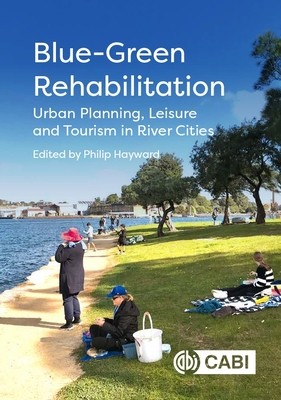
- We will send in 10–14 business days.
- Publisher: CABI
- ISBN-10: 1800625278
- ISBN-13: 9781800625273
- Format: 17 x 24.4 x 1.8 cm, cietos vākos
- Language: English
- SAVE -10% with code: EXTRA
Blue-Green Rehabilitation (e-book) (used book) | bookbook.eu
Reviews
Description
In recent decades there has been a burgeoning interest in the development of blue-green corridors: areas where waterways are complemented by adjoining green spaces and related paths and leisure facilities. Urban planners have increasingly favored such zones as a means of refreshing inner-city spaces. In many cases, such projects have involved the rehabilitation of former industrial and/or otherwise polluted waterways and adjacent land. These newly configured blue-green spaces have benefitted residents and provided a substantial attraction to tourists through in- and on- the water options (e.g., swimming, kayaking, fishing, cruise boat transit etc.), waterside relaxation and a range of riverbank activities. The establishment of managed green spaces has also seen the return of a variety of native species to such areas and the re-presentation of former waterside industrial features as heritage artifacts has also added value and appeal to such corridors.
The anthology comprises nine international case studies that illustrate examples of best practice and/or the problems that can arise from such rehabilitations, such as gentrification (forcing housing prices up and dispersing established communities) and de-industrialization that leads to reduced livelihood opportunities. Individual studies in the volume analyze the dynamics of neglect and rehabilitation, contrasting stakeholder agendas, destination branding and regional-national orientations. Collectively, the volume comprises an important reference point for future blue-green rehabilitation projects and the conclusion offers an agenda for the development of just and sustainable blue-green initiatives.EXTRA 10 % discount with code: EXTRA
The promotion ends in 21d.14:50:09
The discount code is valid when purchasing from 10 €. Discounts do not stack.
- Publisher: CABI
- ISBN-10: 1800625278
- ISBN-13: 9781800625273
- Format: 17 x 24.4 x 1.8 cm, cietos vākos
- Language: English English
In recent decades there has been a burgeoning interest in the development of blue-green corridors: areas where waterways are complemented by adjoining green spaces and related paths and leisure facilities. Urban planners have increasingly favored such zones as a means of refreshing inner-city spaces. In many cases, such projects have involved the rehabilitation of former industrial and/or otherwise polluted waterways and adjacent land. These newly configured blue-green spaces have benefitted residents and provided a substantial attraction to tourists through in- and on- the water options (e.g., swimming, kayaking, fishing, cruise boat transit etc.), waterside relaxation and a range of riverbank activities. The establishment of managed green spaces has also seen the return of a variety of native species to such areas and the re-presentation of former waterside industrial features as heritage artifacts has also added value and appeal to such corridors.
The anthology comprises nine international case studies that illustrate examples of best practice and/or the problems that can arise from such rehabilitations, such as gentrification (forcing housing prices up and dispersing established communities) and de-industrialization that leads to reduced livelihood opportunities. Individual studies in the volume analyze the dynamics of neglect and rehabilitation, contrasting stakeholder agendas, destination branding and regional-national orientations. Collectively, the volume comprises an important reference point for future blue-green rehabilitation projects and the conclusion offers an agenda for the development of just and sustainable blue-green initiatives.

Reviews